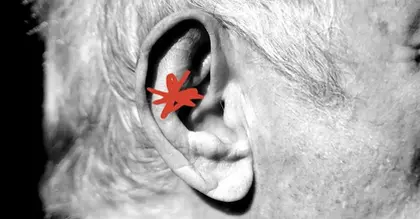
- A new study finds that people with ADHD who are treated with medication are at a 19% lower risk of death compared to people with untreated ADHD.
- The findings suggest that ADHD medication may be life-saving due to multiple psychiatric comorbidities associated with ADHD, such as depression and bipolar disorder.
- Nearly 10% of children and teens in the United States live with ADHD, which requires careful diagnosis and may present differently in males and females.
- A recent shortage of ADHD medications has complicated ADHD treatment.
A new study finds that people treated for attention deficit hyperactivity disorder (ADHD) with medication are at a lower risk of non-natural death compared to people with untreated ADHD.
The observational study was conducted in Sweden and tracked the health of 148,578 individuals with ADHD. Of these people, 41.3% were female. The median age of those included in the study was 17.4 years, and the overall age range was 6 to 64. Each individual was followed for two years after diagnosis.
The researchers recorded all-cause deaths, as well as deaths from non-natural causes associated with ADHD, such as accidents, suicide, accidental poisoning, or drug overdose.
The findings show that people who are pharmacologically treated for ADHD had a 19% lower risk of death over the two years they were tracked than people whose ADHD was not being treated.
The study was recently published in
Dr. Nikunj Gokani, a psychiatrist with Allo Health, not involved in the study, told Medical News Today:
“This study provides valuable insights into the potential benefits of ADHD medication in reducing mortality risks, particularly in preventing deaths from accidents, poisoning, and suicide. The large sample size, longitudinal design, and emulation of a randomized clinical trial lend credibility to the findings.”
ADHD is most commonly treated with the stimulants Adderall (amphetamine/dextroamphetamine) and Ritalin (methylphenidate).
Dr. Gokani explained such stimulants can alleviate ADHD symptoms by increasing neurotransmitter levels in the brain. This can result in improved attentional abilities, impulse control, and more successful regulation of one’s behavior.
He added that for people who do not respond well to stimulants, there are non-stimulant medications such as atomoxetine and guanfacine.
The findings of the present study suggest that prescribed ADHD medication may be life-saving for some people with ADHD since several psychiatric comorbidities are associated with the condition.
Dr. Tzvi Furer, a psychiatrist with Palm Tree Psychiatry in Florida, not involved in the study, explained that ADHD conditions are often seen alongside other mental Health conditions, such as:
- depression
- bipolar disorder
- anxiety disorders
- oppositional defiant disorder (ODD)
- conduct disorder (CD)
- obsessive-compulsive disorder (OCD)
- post-traumatic stress disorder (PTSD)
- substance use disorders
Still, Gokani noted an observational study has inherent limitations, since there is always the possibility that confounding factors may confuse the findings.
Observational studies based on population data can identify associations — for example, being treated for ADHD and a lower mortality risk — but establishing a causal relationship is beyond the scope of such analyses.
Dr. Gokani cited several strengths of the study beyond its large sample size, including its longitudinal design encompassing two years, its emulation of a randomized clinical trial, and the researchers’ use of electronic health records that provide strong detail and minimize bias.
However, the heterogeneity of an all-Swedish population, the short two-year study period, and little information regarding individuals’ adherence to medication prescriptions could warrant further research, he said.
Dr. Gokani also noted a potential for selection bias. “Individuals who receive ADHD medication may differ systematically from those who do not,” he said.
ADHD can affect adults but is most often diagnosed in children and teens.
According to the
Of these, 3.3 million were 12 to 17 years old, 2.4 million were 6 to 11, and 265,000 were ages 3 to 5.
ADHD is accompanied by several types of traits: an inability to focus, manage one’s energy levels, and excessively impulsive behavior. The condition is clinically divided into three types:
- predominantly inattentive
- predominantly hyperactive
- a combination of both
Dr. Furer noted that diagnosing ADHD requires “careful clinical observation and assessment.”
He told MNT that hyperactive ADHD may be the easiest to recognize, accompanied as it frequently is by disruptive behavior in school or at work.
Inattentive ADHD may be harder to discern, he said, because “this can often be missed and categorized as ‘laziness,’ and often one does not get diagnosed until later unless there is very careful observation or assessment.”
“ADHD often exists alongside various learning and developmental disorders, including difficulty with speech, reading, [and] writing, and can have associated motor delays,” Dr. Furer explained.
In addition, ADHD may present differently in males and females.
“Typically, males are diagnosed with the hyperactive presentation, while females are diagnosed with the inattentive presentation. However, possible gender bias can obscure accurate diagnosis at times,” Dr. Furer said.
There is an ongoing shortage of both Adderall and Ritalin that has made it difficult to provide consistent treatment for people with ADHD.
Pharmaceutical companies have reported production issues, manufacturing problems, and issues with material supplies. There was also a sizable
Recreational use of Adderall could also factor into the ADHD medication shortage.
A 2016 study published in The Journal of Clinical Psychiatry found that from 2006 to 2011, nonprescription Adderall use increased 67%, accompanied by a 156% increase in related emergency room visits.
The findings of the present study highlight a growing need for adequate ADHD medication supplies, which could add years to a person’s life when taken as prescribed.





